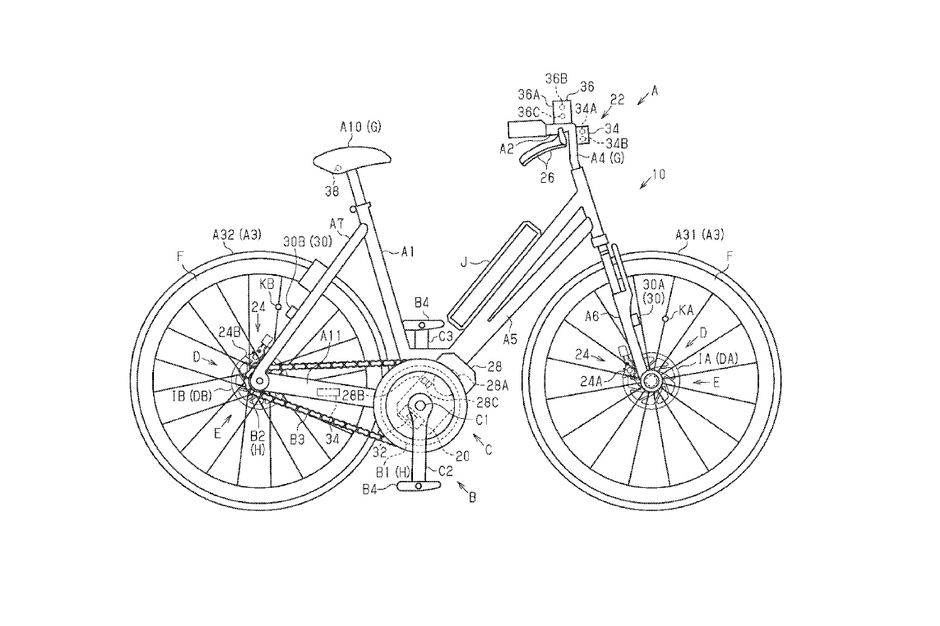Shimano developing ABS system
Shimano has registered patent drawings for a possible mountain biking ABS system

Shimano has started a patent registration process for an anti-lock braking (ABS) system.
First spotted by BikeRadar, the patent sketches show Shimano’s ABS system applied to an e-bike, but any ABS cycling system would be applicable to mountain bikes, too.
Although a crucial safety feature in aviation landing gear and most wheeled vehicles, ABS has proved a significant engineering challenge for lightweight two-wheeled vehicles, such as bicycles. In the mountain biking application, it is even more technically challenging, due to the variety of trail surfaces.
ABS brakes prevent lock-up by applying very high-frequency pulse-modulation when braking force is at its peak. Although this works wonderfully in practice on roads, the ABS system can struggle on gravel.
As computing and data acquisition technology has advanced, the configuration of ABS systems have become more compact. They require less wiring to function now, with sensors capable of wireless communication, something which is beneficial for a possible mountain-biking application.
Bosch and Blubrake have ABS mountain bike systems in production, but they are very much niche products. Shimano is a global component leader and specialist brake manufacturer. Any ABS development from the Japanese brand would have enormous scaling and supply chain legacy powering its adoption in the market.
Using laser and GPS tech
From the Shimano patent application drawing, we can see that its ABS system has sophisticated wheel speed and terrain monitoring as the primary data provider. There is also a GPS module, for speed referencing.
In the Shimano patent diagram, provision is made for using light emission and reflection to provide wheel and terrain speed data: effectively a LIDAR system.
LIDAR is originally a medical imaging technology, which has been rapidly evolved by the autonomous vehicle industry, using laser projection and wavelengths to create an image and measure references points in any environment.
ABS cycling brakes have a huge potential safety benefit for road and commuter cyclist, who ride on a constant high-friction tarmac surface. On any terrain where the surface is less predictable in its structure – gravel, mud, sand, loose rock – the ABS system could prove bothersome.
There are instances in mountain biking where you would be less safe if the wheels keep rolling, instead of locking up.
A possible compromise for mountain bike ABS systems, could be a control module which is sensitive to axle loading, varying its anti-lock function according to rider position and terrain gradient.

Lance Branquinho is a Namibian-born journalist who graduated to mountain biking after injuries curtailed his trail running. He has a weakness for British steel hardtails, especially those which only run a single gear. As well as Bike Perfect, Lance has written for MBR.com, Off-Road.cc and Cycling News.
